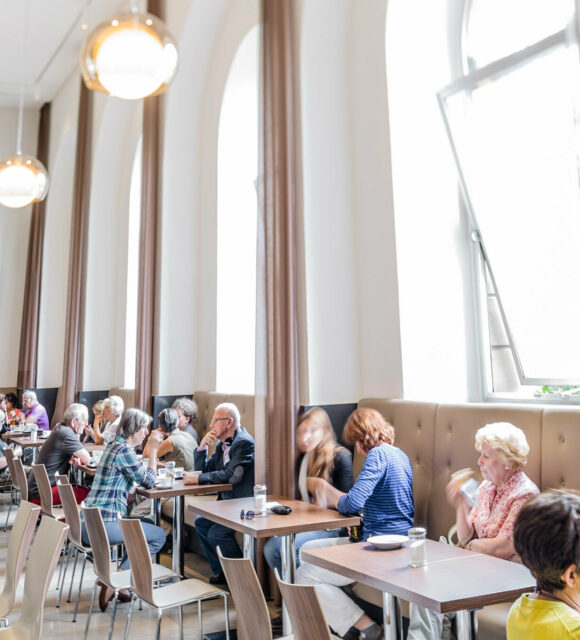
A French fishing village becomes a myth. Étretat, in Normandy on the Atlantic coast, captivated many artists in the 19th century. It was Claude Monet who was most fascinated by the unique cliffs with their three rock arches—Porte d’Amont, Porte d’Aval and Manneporte—to which he dedicated a series of paintings. Together with the Musée des Beaux-Arts de Lyon, the Städel Museum is presenting a major exhibition on the artistic discovery of Étretat and its influence on modern painting.
About the Exhibition
Excitingly beautiful and threatening at the same time: the characteristic rocky landscape of Étretat was of particular interest. Painters and writers travelled to Étretat and, through their works, made this remote place famous beyond the borders of France. Gustave Courbet painted his famous wave pictures here, Guy de Maupassant elevated Étretat to a place of longing in his writings, and the composer Jacques Offenbach had a lavish villa built in the small coastal town.
With the development of tourism around 1850, Étretat became a popular seaside resort and a meeting place for artists, intellectuals and the Parisian bourgeoisie. It was at Étretat, under the constantly changing light and weather conditions, that Monet first began to paint series of motifs, a working method that would later become his trademark. Étretat therefore played an important role in the birth of a new style of painting that would later be known as Impressionism.
In the spring of 2026, outstanding paintings, drawings, photographs and historical documents from French, German and other international museums and private collections will be on display in Frankfurt. The works of modern and contemporary artists—from Félix Vallotton and Henri Matisse to Georges Braques and Elger Esser—illustrate the enduring fascination of this place. Étretat has been a holiday resort and international tourist destination for more than 150 years. But the flow of people is threatening the cliffs, as are erosion and climate change. Examining the myth of Étretat therefore also allows us to trace the ambivalent effects of the popularization of a place and the role that art has played in it.
Curators
Alexander Eiling (Head of Modern Art, Städel Museum)
Stéphane Paccoud (Chief Curator of 19th-Century Paintings and Sculptures, Musée des Beaux-Arts de Lyon)
Isolde Pludermacher (General Curator of Paintings, Musée d’Orsay, Paris)
Project Manager
Eva-Maria Höllerer (Curator, Städel Museum)
Nelly Janotka (Assistant Curator, Städel Museum)
Sponsors & Patrons
Sponsored by
Fraport AG



















